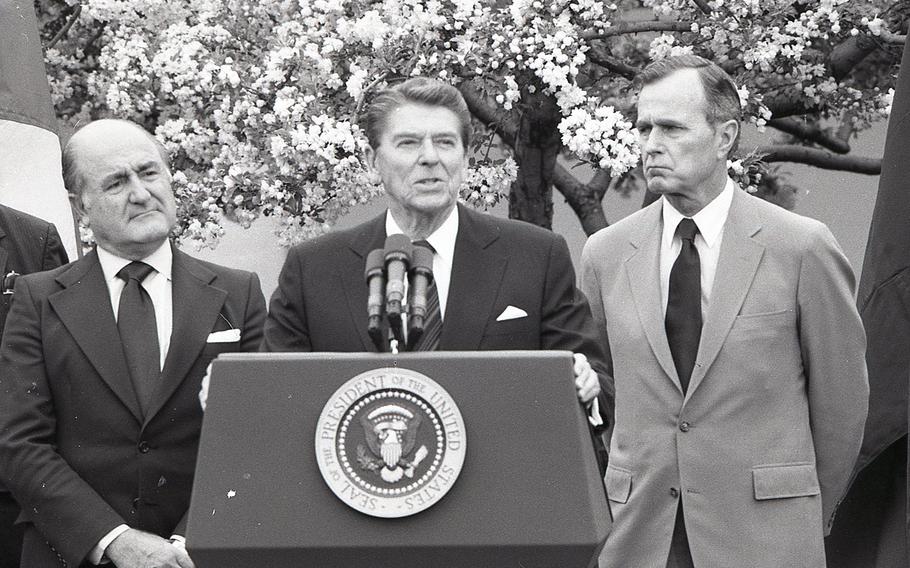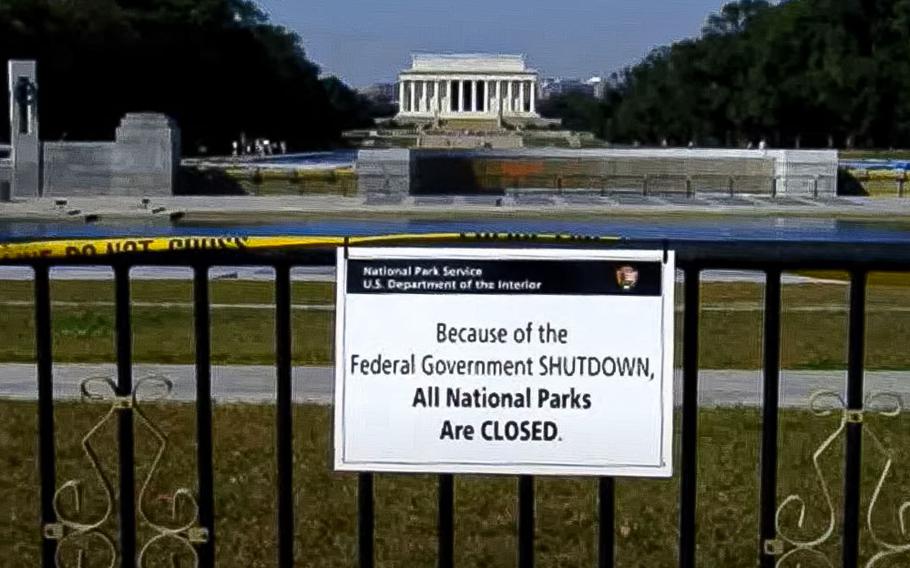
Then-President Ronald Reagan speaks from a podium during an event at the White House in Washington, D.C. (USAID, Historical Archive)
Raise your hand if you’ve heard (or uttered!) a version of this gripe before: “All this partisanship nowadays - why can’t things be like they were in the era of Ronald Reagan and Tip O’Neill?!” Reagan was a Republican president and O’Neill the Democratic House speaker he had to deal with, the story goes, but the two were great friends who put politics aside and the government ran smoothly.
Fact check: There were more government shutdowns during the Reagan years than under all the presidents since then, combined.
There were eight under Reagan and seven since, according to the Congressional Research Service and news reports compiled by The Washington Post. Even if the current impasse leads to a government shutdown next week, the Reagan presidency will still have as many as the rest of them put together.
There are, of course, two giants asterisks to this:
1) The shutdowns in the Reagan years were short, some lasting only hours, not even enough time to hang a closed sign at the entrance to a national park;

A video screen grab shows a sign announcing a Federal Government Shutdown hanging on a gate blocking off the World War II Memorial in Washington, D.C., on Oct. 1, 2013. (Stars and Stripes)
2) All of these shutdowns were the result of a 1980 memo from a Democratic attorney general.
Before this memo, the federal government occasionally ran out of funding before a new budget had been passed, and . . . nothing happened. The government just kept functioning, federal workers kept clocking in, food stamps were still issued, and park rangers still managed the nation’s public lands, under the reasonable assumption that eventually funding would come through and the “funding gap” would be filled.
Then, in 1980, in the waning days of the Carter administration, the president and Congress got in a fight over the Federal Trade Commission. The agency, which protects consumers and supports antitrust law, needed funding approved for the new fiscal year, and key members of Congress, who were being pressured by corporate lobbyists, refused to do it unless the FTC’s regulation powers were blunted.
Carter asked his attorney general, Benjamin Civiletti, what the law said about what to do if and when the money ran out. Ever the lawyer, Civiletti dove into a century of obscure legislation and came up waving the Antideficiency Act of 1870. Its language was “plain and unambiguous,” he wrote to Carter: If the FTC ran out of money, it could not incur new expenses and would have to shut down.
Months later, when a much bigger funding gap loomed, Civiletti reiterated his stance in a new memo, but he also built in a bit of a hedge: Yes, the whole federal government would have to shut down, he advised, except for the work essential to the “safety of human life or the protection of property.”
So that was the guidance on funding gaps going into the Reagan administration the next year. Reagan’s comptroller general recommended Congress amend the Antideficiency Act to stop this threat; that was 42 years ago, and [insert 1 million shrug emojis].
Civiletti died in 2022, but in 2019, during the longest government shutdown in history, he told The Post he “couldn’t have ever imagined these shutdowns would last this long of a time and would be used as a political gambit.”
But that’s exactly what happened. In November 1981, Reagan vetoed a spending bill because it didn’t include as many domestic spending cuts as he wanted and ordered a shutdown. It lasted less than two days, and since it fell on a weekend, when the few federal workers on the job were mostly considered essential, “hardly anyone noticed,” the New York Times reported. By Monday, Congress had passed a temporary funding measure, and negotiations continued.
Ten months later, in September 1982, it happened again, this time for only a few hours. Then again in December 1982, November 1983, September and October 1984, and on and on. Each time, Congress would approve a continuing resolution right before “nonessential” federal workers would have had to stay home, and the threatened cyclone would turn out to be a little rain.
It wasn’t until the government shutdowns in 1995, during the Clinton administration, that Civiletti’s decree really took effect. Amid a standoff between President Bill Clinton and House Speaker Newt Gingrich (R-Ga.) over Medicare premiums and a balanced budget, the federal government shut down for real, first for five days, then for 21.
Since 1981, every president with the exception of George W. Bush has experienced at least one government shutdown. And yes, Reagan had the most, but, true to the cliché, those turned out to be halcyon days. Starting in 1995, the shutdowns have gotten longer and more painful. And while Democrats controlled the House during all the shutdowns before 1995, Republicans have controlled the House every time the money ran out since.